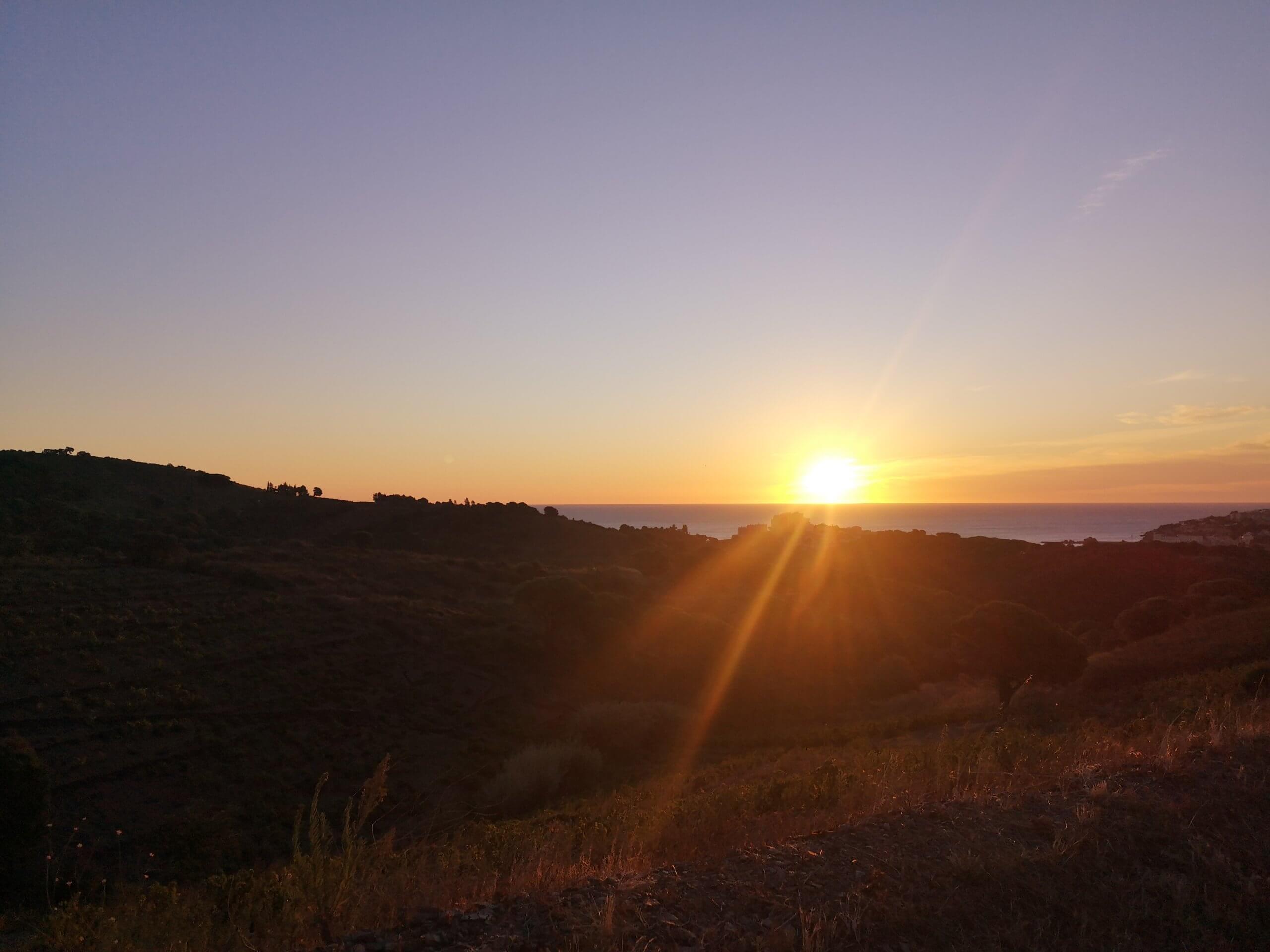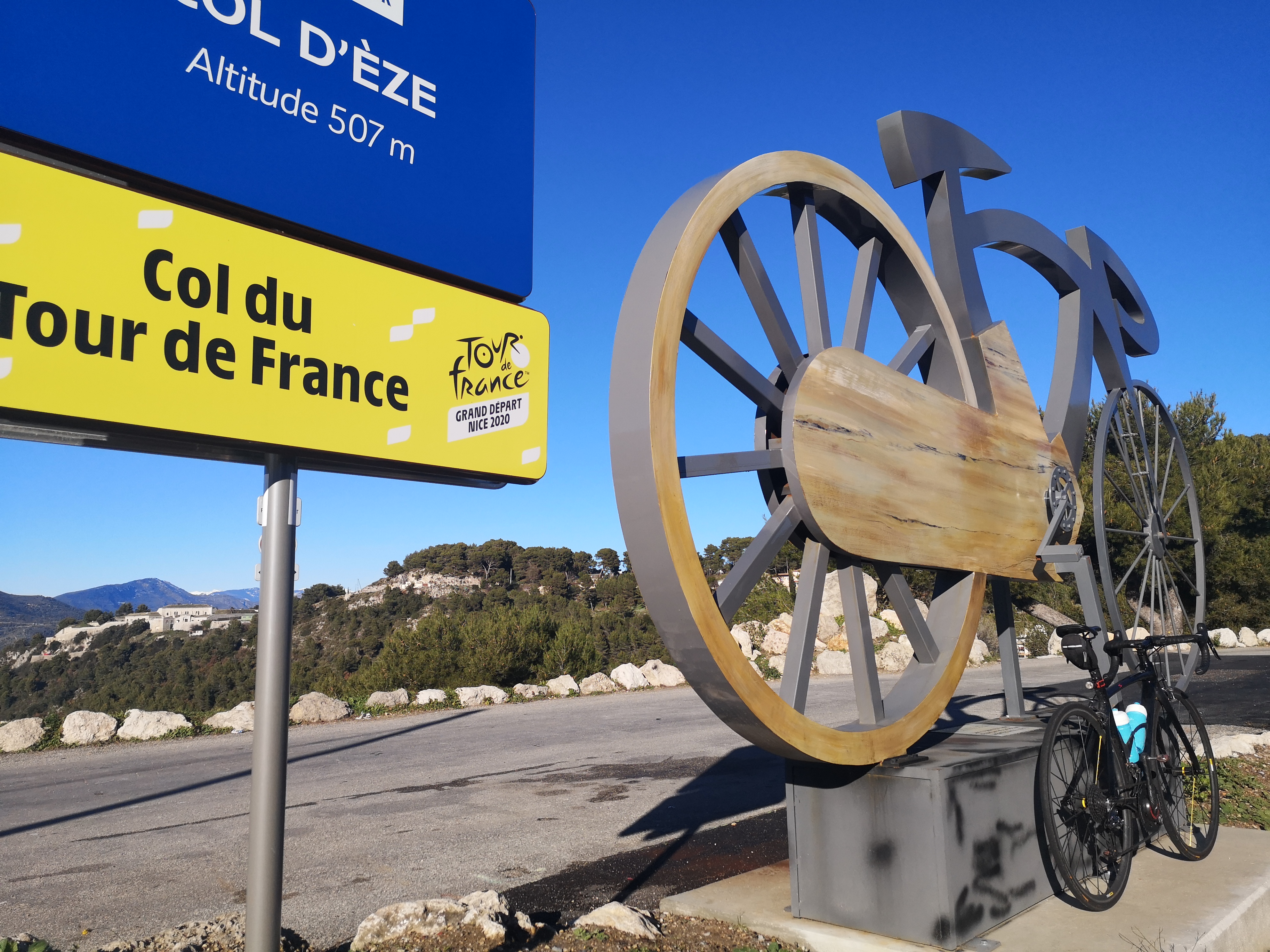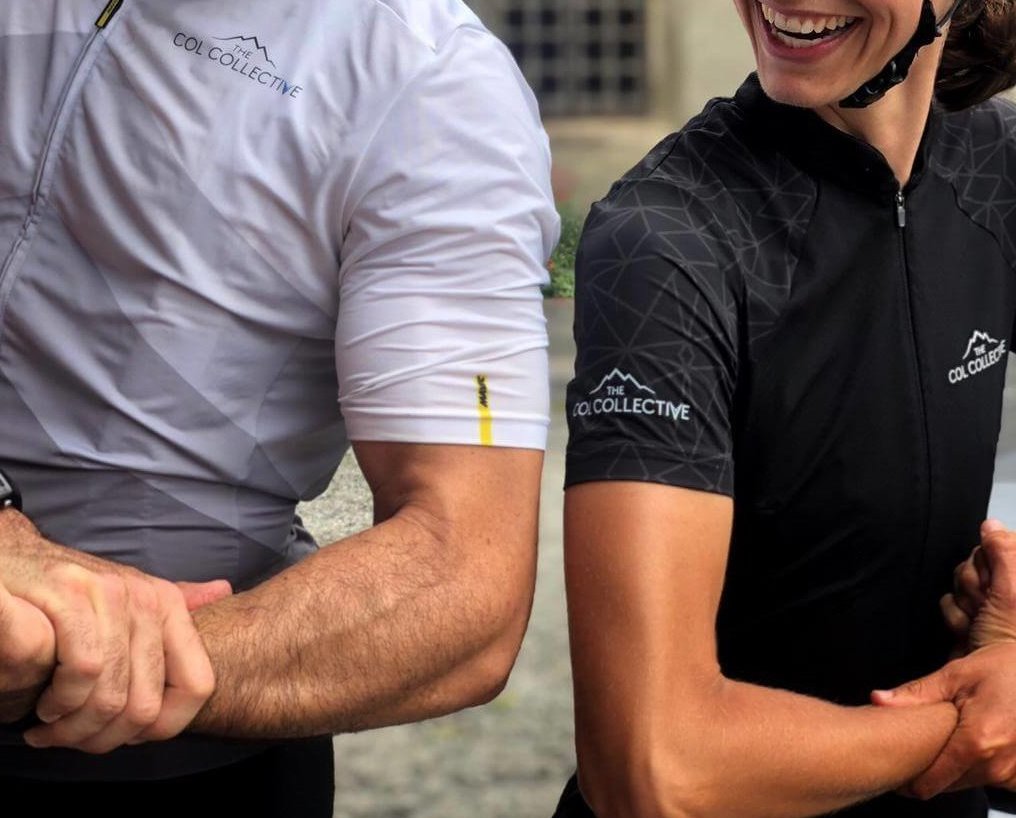Food in your pockets, hydration in your bottles : hydration is not nutrition. In this article, I wish to give out basic essential information regarding how digestion takes place in our bodies and how to apply this understanding to fuelling and hydrating during your rides. Hoping to make it as clearly as possible, this article dives into the physiology of digestion and as such can be technical at points.
How digestion works
This is a very broad summary of a highly complicated subject, please note that it represents how the macro process happen but shouldn’t be taken as a thorough presentation of digestion.
In a way, digestion start as soon as you see or smell food : this allows a parasympathetic response with the secretion of gastric juice in your stomach. Chewing, swallowing are the next steps, followed by the transformation of food into a thick liquid called chyme in the stomach.
Then, following stimulation by the vagus nerves, small amounts of chyme pass into the small intestine where digestion is completed and end products are absorbed into blood and lymph (fluid containing white blood cells, which bathes the tissues and drains through the lymphatic system into the bloodstream).
From food to nutrition
First, enzymes break down macro molecules into small units :
- protein are broken down into amino acids (small molecule containing both a carboxyle and an amino group – there are 22 different amino acids used by living organisms and hundreds exist),
- all carbohydrates are broken down into monosaccharides (simple sugars which can’t be broken).
Then, absorption of nutrients takes place :
- small units of carbohydrates (monosaccharides), small units of proteins (amino acids), ions and vitamins soluble in water (B and C) are transported from the small intestine into the blood vessels. Many nutrients need helper-molecules to facilitate their absorption : for instance, most vitamins need to be transported with the help of a sodium ion (Na+).
- fatty acids and fat-soluble vitamins (A, D, E and K) are absorbed into the lymph and the fatty acides are then recombined into triglycerides.
From water to hydration
Hydration, like nutrition, happens during digestion. Water is absorbed into the blood using a process called osmosis. To explain this, let’s set up the scene : you have two compartments separated by a semiporous membrane, with water solutions on each side. Each solution has a different osmolality (number of particles per liter of water) : the solution with the highest number of particles per liter of water is called hypertonic, and the solution with the lowest number of particles per liter of water is called hypotonic.
In order to balance the number of particles per liter of water on each side of the membrane, since the particles can’t move through the membrane, the water will move away from the hypotonic side in order to dilute the hypertonic side. The movement stops when both sides have the same osmolality, in which case the solutions are called isotonic.
In digestion, the absorption of minerals and especially of sodium happens first, establishing a different osmolality between the blood and the chyme ; thus, osmosis can happen and water moves away from the small intestine and into the bloodstream.
Hydration is not Nutrition
Water, and thus hydration is required at almost every level of the chemical reactions happening in our body. Keeping the body hydrated is essential for health and especially for endurance efforts. A good way to know that your body is well hydrated is that your thirst sensation (low) is low AND your urine color (pale). It is unclear how much light dehydration impair your performance on the bike so you might not loose much power while dehydrated but you will impair many physiological processes.
As we just saw, absorption of water happens if the bloodstream has a higher osmolality than the small intestine -otherwise, if the osmolality of the small intestine is higher, water will be absorbed from the blood into the intestine, which is a first step in dehydration. In other words, you will be hydrating if you drink something which has a lower osmolality than your blood.
Blood typical osmolality is within the range of 275 to 295 mOsm (juices, soft drinks, sodas osmolality range 492-784 mOsm, mineral waters between 13 and 119 mOsm, ciders, wines or alcoholic beverages omoslality is typically higher than 1000 mOsm).
Classic sports drinks de-hydrate you
Most sports drinks have an osmolality of 300-305 mOsm (on top of creating dental issues because of their low pH); recovery drinks osmolality typically range 373-690 mOsm. . Now that you understand the concept of osmosis, you can figure out easily that it means a higher osmolality than blood, and thus if ingested, a sports drink will make water moves FROM the bloodstream into the intestine.
This will cause dehydration and GI distress. Broadly speaking, you can not expect your body to absorb both nutrients and water in the same way. You have to separate hydration from nutrition, these are two different physiological processes which are almost in competition.
Stay away from undue stress
I know : tradition states that liquid food is alright and sports drinks are good. But reading labels and digging deeper into science shows you how much these create undue stressors on your body which need to be overcome. Might be a good idea to suppress the stressors and focus our body on producing power, don’t you think ?
Note that maltodextrin inhibits fluid absorption; fructose increases heat storage; chloride alters the membrane potential of the intestinal cells, releasing endotoxins. Try to limit all of them in what you eat and drink on the bike.
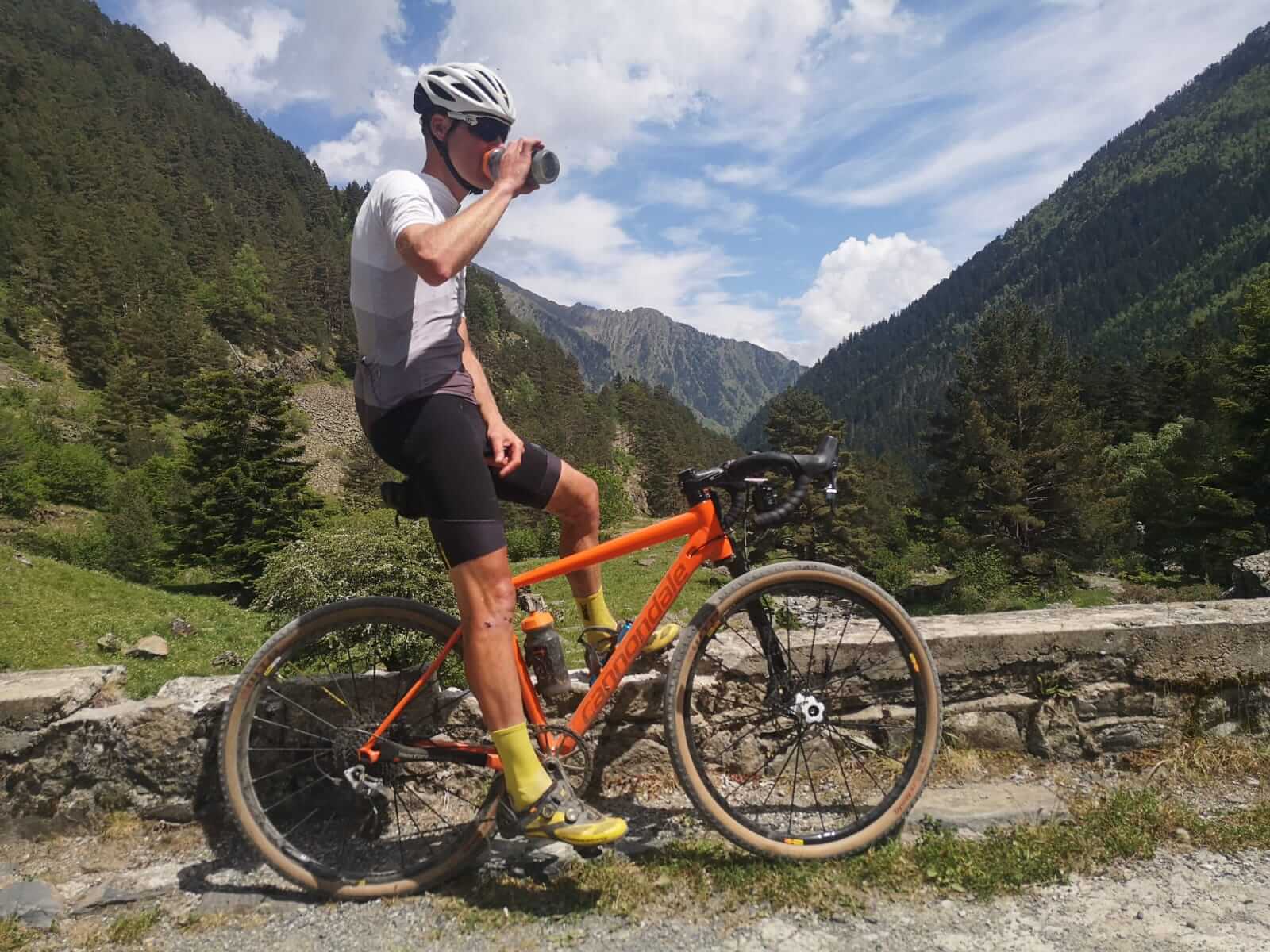 Hydration : what to drink then ?
Hydration : what to drink then ?
We’ve seen that it’s important to drink water WITH some of the helper-molecules such as sodium, but limiting the overall osmolality of the solution. The helper molecules are essentially sodium, magnesium, potassium, (glucose and fructose) : they are called electrolytes.
You shouldn’t expect your drink to give you the necessary energy you need to fuel your ride ! Your drink will hydrate you but it will never have enough carbohydrates in it to give you energy.
Products such as Osmo or Nuun have been developed with the sole idea of hydrating your body, and if anything my advice would be for you to turn to these drinks (I don’t own any share of any of these companies 😉 ).
And nutrition : what about eating ?
As you are moving doing any kind of exercice, you burn fuel (fatty acids, glucose, phosphocreatine) from your body in order to produce energy in the muscles and power on the pedals.
Now that you know you have to separate fuel from drink, let’s focus on what you can eat to fuel your ride. There is no one-fits-all solution, but there is one motto (from Dr Sims) : fuel your ride.
This means adapting your food intake to
- you : your sex (women and men process nutrients differently) and your menstrual cycle
- the kind of training you do (duration, intensity)
- the environment where you train (altitude, temperature, indoors..).
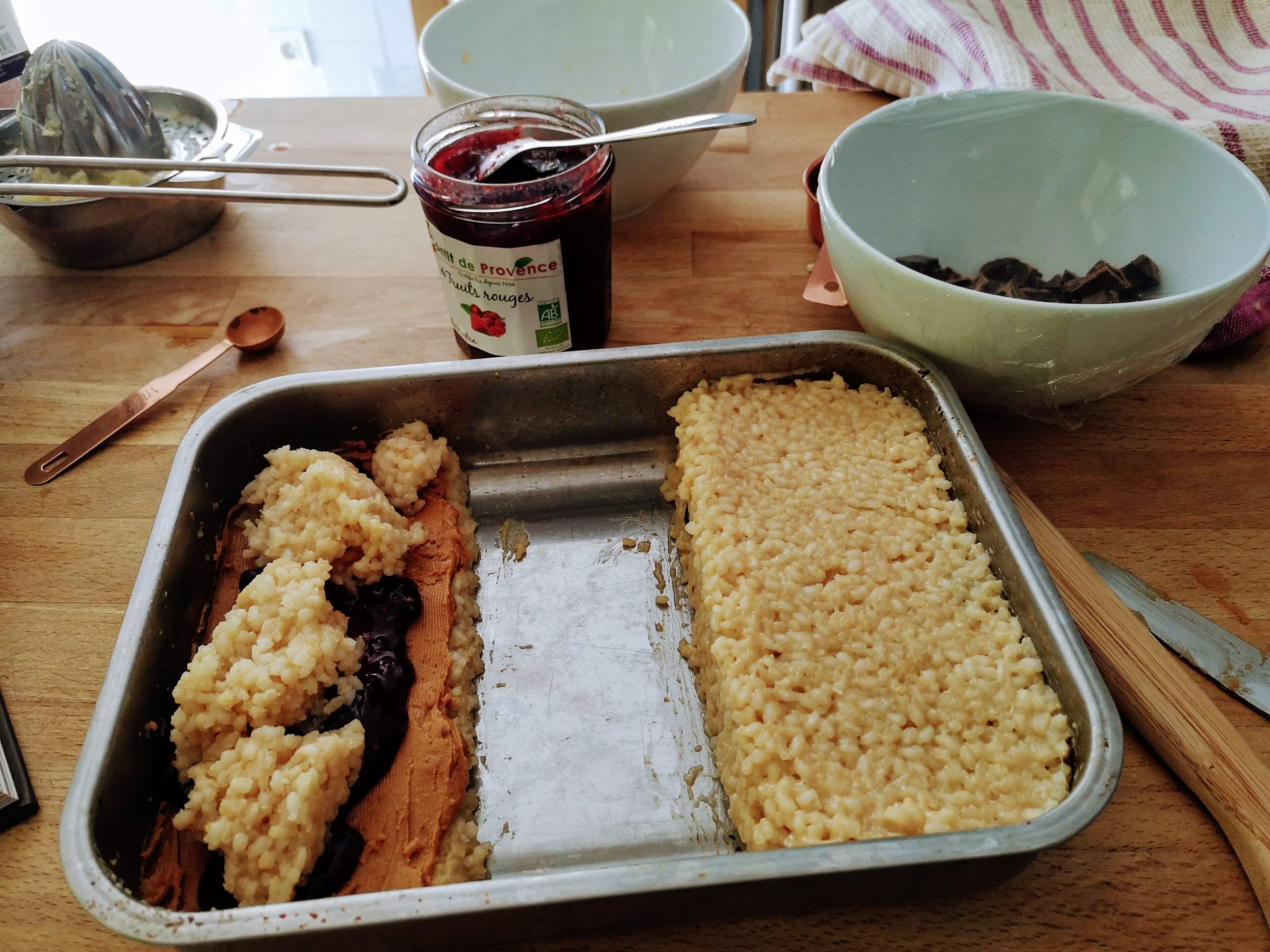 I’ve always been very skeptical about the ready-made sports bars, fancily imagined by engineers in labs. My main concern is to accept that brain-powered engineers and nutritionists can do a better job than Mother Nature who has fed us for hundreds of millions of years.
I’ve always been very skeptical about the ready-made sports bars, fancily imagined by engineers in labs. My main concern is to accept that brain-powered engineers and nutritionists can do a better job than Mother Nature who has fed us for hundreds of millions of years.
I did try the bars and stuff : not only are they expensive, but I never really enjoyed the taste of these very sweet products. And then I tried eating real food : salty potatoes, almonds, rice cakes… It changed everything. From my own experience, but also from more and more scientific voices, I would recommend the use of real food to fuel your rides. You can find many ideas and recipes in either Eat, Race, Win or in Feed zone portables.
In a nutshell, as most of our physiological processes, digestion is an individual process. Hence both nutrition and hydration have to be separated and tailored to your sex, your training, your racing conditions, etc. Sports nutrition has become in the past years a successful industry, but sports hydration wasn’t much of a subject ! It has been lead very often by marketing, and you need to be mindful of the easy slogans written on bars, tablets and gels from an industry trying to convince you that recently developed engineered food works better than real food which has been processed by our bodies for thousands of years !




